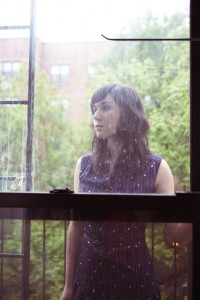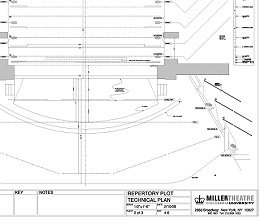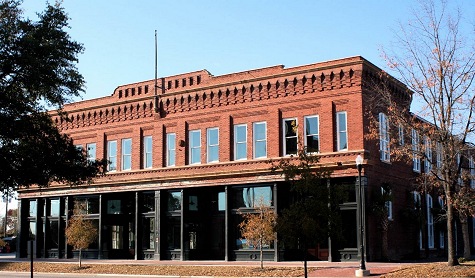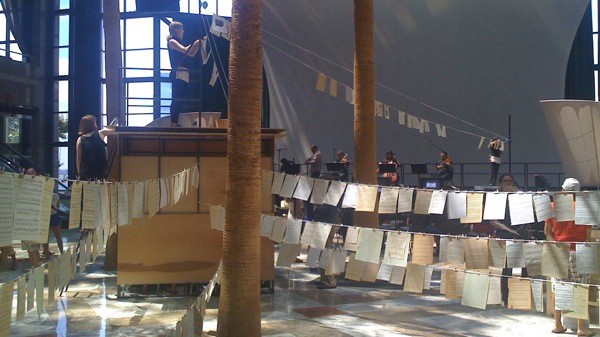
Sarah Lipstate is a musician and film maker. She’s only been in New York for a few years, but has already made a name for herself as a strong, independent voice on the guitar. Her primary focus is Noveller, her solo guitar project, which presents gorgeous and evocative sound-scapes that are deliberate and slow building. In an age where so much music is at the click of a mouse, it’s exciting to see a musician who doesn’t care about getting to the point too quickly. In order to fully experience Noveller, you have to be on for the whole ride. Lipstate sat down with me in her Bushwick apartment to talk about Noveller, where it came from, and where it’s going.
Adam: First and foremost, how do you pronounce your stage name?
Sarah: It’s Noveller (Know-vell-er). When I was in college I played in a duo with this guy, and he was really into the idea of us having pseudonyms for the band. So, my pseudonym was “Novella”, which I chose just because I liked the way it sounded. When I started doing solo work, I recorded a track for a compilation called “Women Take Back The Noise”, I had to come up with a name. I was already used to having this Novella name and decided that Noveller of was kind of a nice spin on that.
A: How long ago, do you think the inklings of the music you’re creating now began?
S: I started doing more ambient guitar work when I was 19, at UT in Austin, Texas. I had a four track tape recorder that I had gotten for Christmas from my family, and I remember living in the dorms, setting up my guitar, and plugging into the four track. My friend had given me an Ebow, cause he was like “My uncle gave this to me, I think it’s totally boring, I don’t like it, you can have it.” But I just thought it was really cool, and I could get some really cool sounds with this Ebow. So I would record in my dorm room these sound scape-y experiments, and I didn’t really know any better but I used the same tape for six months, and then one day I was playing it back in my stereo and it got completely destroyed. I’m still kinda sad about that to this day. So yeah, as far back as that. Then eventually I moved for the four track to a recording program on my laptop computer, expanding what kind of sounds I could create at that time with limited gear, and not having that much space to play music out loud
A: When did you start performing that music? It seems that taking the leap from recording endless loops towards trying to do something with that energy live seems pretty different.
S: I didn’t perform live as Noveller until I moved to Brooklyn, in January 2007. Shortly after being here I was invited to play an experimental music festival in Washington, DC called Sonic Circuits. They offered me money, and it was a really cool festival, so I agreed to do it and prepared a set. It was kind of difficult to transition from the endless possibilities of recording and overdubbing, and then finding out how to do that with my double necked guitar and a looping pedal. I had to grow into creating live pieces that I was happy with, creating a full sound with two hands, my guitar and a few pedals. But it’s definitely fun. I think it’s evolved a lot from the first few shows.
A: How much of your music is pre-composed?
S: Everything that I do currently is stuff that I’ve worked on at home, to where I know there’s a structure laid out. It changes every single time I play live, there’s not a set length and I can adapt things wildly, but I know how things are going to start, progress and end for the most part. There have been a few cases where things have gone wrong during a show and I’ve just been like “OK, I’m going to wing the next ten minutes,” and then things get kind of crazy.

 Gino Robair has created music for dance, theater, gamelan orchestra, radio, and television. His works have been performed throughout North America, Europe, and Japan. He was composer in residence with the California Shakespeare Festival for five years and served as music director for the CBS animated series The Twisted Tales of Felix the Cat. His commercial work includes themes for the MTV and Comedy Central cable networks. Robair is also one of the “25 innovative percussionists” included in the book Percussion Profiles (SoundWorld, 2001). He has recorded with Tom Waits, Anthony Braxton, Terry Riley, Lou Harrison, John Butcher, Derek Bailey, Peter Kowald, Otomo Yoshihide, the ROVA Saxophone Quartet, and Eugene Chadbourne, among many others. He is a founding member of the Splatter Trio and the heavy metal band Pink Mountain. In addition, he runs Rastascan Records, a label devoted to creative music.
Gino Robair has created music for dance, theater, gamelan orchestra, radio, and television. His works have been performed throughout North America, Europe, and Japan. He was composer in residence with the California Shakespeare Festival for five years and served as music director for the CBS animated series The Twisted Tales of Felix the Cat. His commercial work includes themes for the MTV and Comedy Central cable networks. Robair is also one of the “25 innovative percussionists” included in the book Percussion Profiles (SoundWorld, 2001). He has recorded with Tom Waits, Anthony Braxton, Terry Riley, Lou Harrison, John Butcher, Derek Bailey, Peter Kowald, Otomo Yoshihide, the ROVA Saxophone Quartet, and Eugene Chadbourne, among many others. He is a founding member of the Splatter Trio and the heavy metal band Pink Mountain. In addition, he runs Rastascan Records, a label devoted to creative music.




